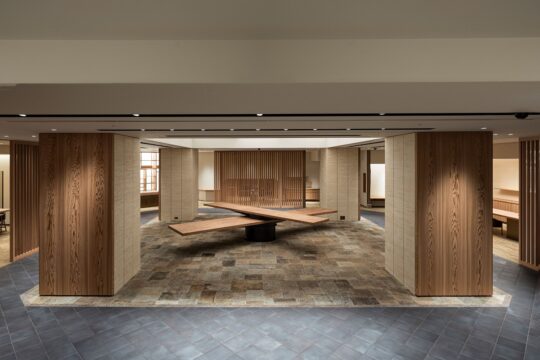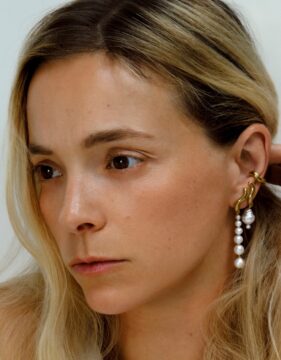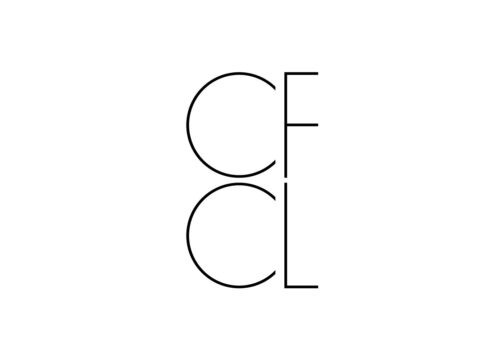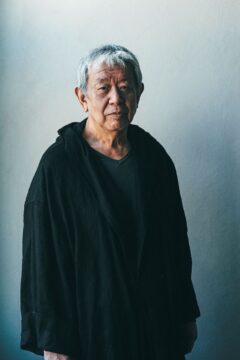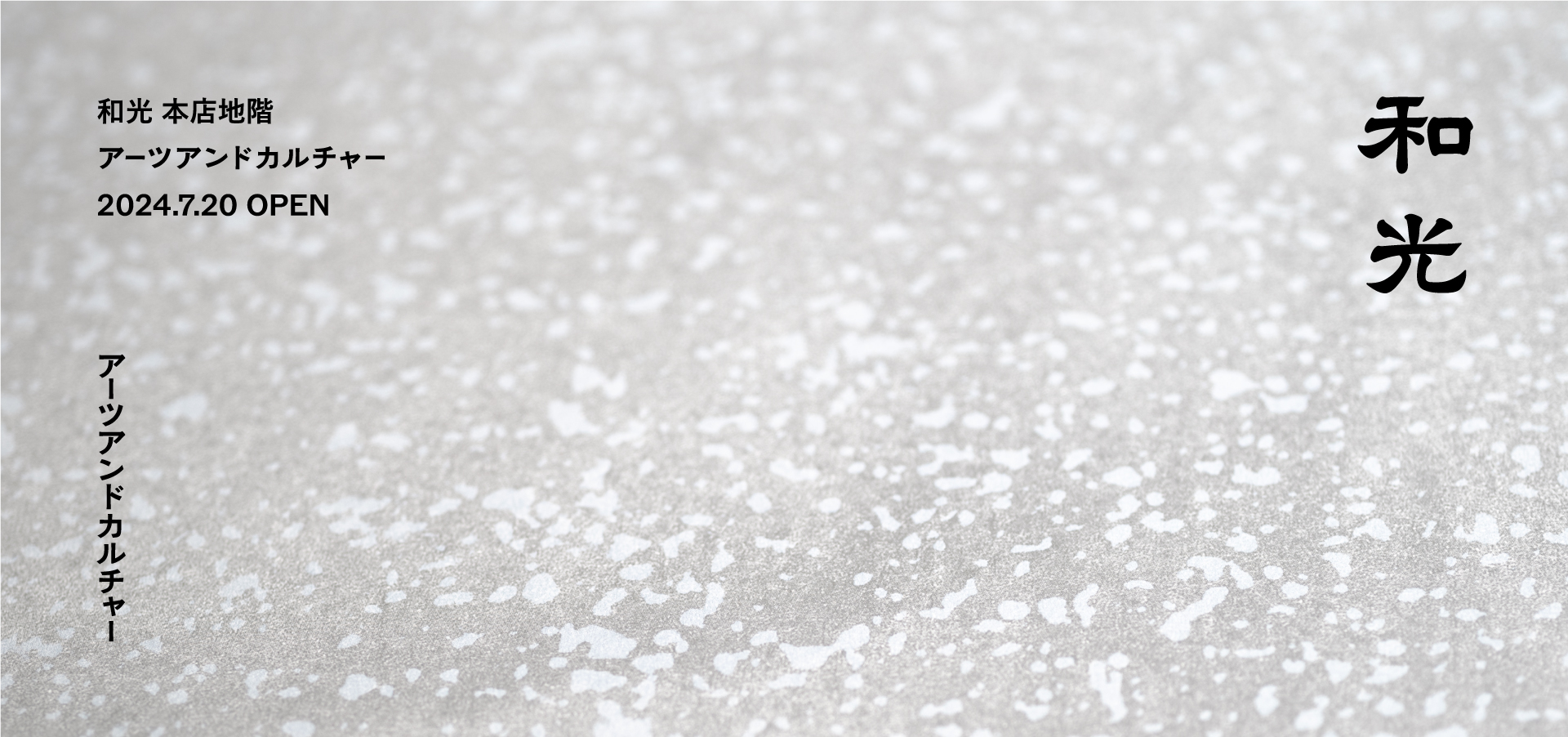
Based on the rich Japanese culture that has been cherished since its founding, the company has evolved into a hub for the dissemination of new art and culture by the next generation of creators.
Wako Co., Ltd. will renovate the basement floor of its main store, a Ginza landmark located at the intersection of Ginza 4-chome, and reopen on Saturday, July 20, 2024.
This is the creation of a base for WAKO, a leading Japanese brand that seeks essential richness, and it expresses the theme that WAKO aims for: "AMAZING WAKO."
The spatial design of the basement floor was handled by Hiroshi Sugimoto and the New Material Laboratory, headed by Tomoyuki Sakakida.
【concept】
The concept of the basement is "a stage for time."
It will be a place of cultural exchange and a place where tradition and innovation resonate together.
The "stage" in the center of the floor is constantly changing thanks to a rotating mechanism that resembles the hour and minute hands of a clock, creating new spatial experiences.
Wako places great importance on "time," and with this in mind, we will create value that will connect to the future on the "stage of time."
– Japanese aesthetic sense and customs born from the changing seasons and how we interact with nature.
– Traditions and techniques that have been handed down for hundreds of years, time spent pursuing creativity, hopes for the future, etc. The stories that exist behind the items.
[Basement]
On the basement floor, contemporary designers and craftsmen working at the forefront of a wide range of fields, including fashion, jewelry, and contemporary art, are creating new brands that resonate with the traditional Japanese aesthetic sense, culture, and techniques that Wako holds dear, while conveying the essence of unprecedented richness.
The "stage" (rotating fixture) located in the center resembles hour and minute hands and changes shape freely, creating new enjoyment in the space. By walking around the "corridor" surrounding the "stage" and looking at the products, each with its own story, it becomes a place where people and things, and people and each other, can meet and deepen their interactions.
<About the design concept "Stage and Corridor">
Wako Main Store is a symbol of Ginza. The basement floor was designed with the theme of "stage and corridor." A rotating fixture with hour and minute hands resembling a clock was placed in the center of the floor as a stage, and a corridor surrounded by wooden latticework was created to allow customers to move around the sales floor. The "Japanese" light stands beautifully in the neo-Renaissance architectural space. We thought it would be best to create the space by pursuing a Japanese design that is reminiscent of "Japanese." We also used materials unique to Japan, such as Kirishima cedar, Yanase cedar, Kyoto townhouse stone, and karakami paper. Feel the peace of mind in this space, which has been arranged in a Japanese style and has a faint scent of wood floating around. (New Materials Research Institute)
【brand】
In order to provide you with a unique experience that can only be found at Wako,
・A unique collaboration between Wako and creators ・A project where Wako connects creators with other creators, and creators with production sites ・Works by creators active around the world
We designed our products based on these three points.
Wako values manufacturing and will continue to express the beauty and culture of Japan together with creators from Japan and abroad.
Charlotte Chesnais
The pieces, which use traditional French techniques such as vermeil and 18K gold, are handmade by skilled craftsmen. Wako is planning a special collaboration with the brand this time. Please take note of the encounter between the timeless traditional French techniques and rare Japanese materials.
CFCL
Founded in 2020, the brand name is an acronym for "Clothing For Contemporary Life," and offers knitwear from the perspective of clothing as a tool for people living in modern times. Pursuing functionality as clothing, environmental friendliness, optimal material selection, and transparency in distribution channels, in 2022 the brand became the first Japanese fashion brand to receive the international certification "B Corporation," which is awarded after rigorous screening.
The basement staff uniforms are made using computer-programmed knitting, making them practical items that are wrinkle-resistant and machine washable.
Kamisoe
This studio modernizes karakami paper, which has been an integral part of Japanese culture and life. It was founded in Nishijin, Kyoto in 2009. The works, which are created through detailed handwork, have a natural softness and warmth. For this project, karakami paper featuring a pattern specially designed by the New Materials Research Institute was used to finish the walls of the basement.
The pattern on the stone wall of Seiko House was cut and printed on karakami paper to create an original letter set.
BYYO
cornelian taurus by daisuke iwanaga
Goldwin 0
KIJIMA TAKAYUKI
L/UNIFORM
Pearl+
SAGAN Vienna
SETCHU
The Elder Statesman
TT (T.T.)
Tu es mon Tresor
Watanabe Textile
And more…
[Show Window]
To coincide with the opening of the basement floor, the central window will feature an installation by Shinichiro Yoshida, an artist and known collector and researcher of natural fabrics, made from ancient white linen cloth that he has been collecting himself. In Japan, white has long been considered pure and innocent, and it wards off impurities, and the whiteness of linen has been used in religious ceremonies. Wako regards white as the color of light, and will light up Ginza with various expressions of white that have been passed down for hundreds of years, celebrating the beginning of a new "stage of time."
■Show window display period
July 18th (Thursday) – August 21st (Wednesday), 2024
Every day from 8:00 to 22:00 (until 19:00 on the final day, August 21st)
Location: Seiko House central window
Shinichiro Yoshida
Born in Kyoto Prefecture in 1948. Artist and Director of the Institute of Modern Azabu. In 1977, he traveled to West Germany and met the contemporary artist Joseph Beuys. After returning to Japan, he began to study ancient art and folklore on his own, influenced by Beuys. He has collected ramie and hemp cloth from the Edo period, and has researched fibers and threads, and has presented his work at museum exhibitions across the country. As an artist, he has exhibited his works at Sagacho Exhibit Space (1987), Yamaguchi Center for Arts and Media [YCAM] (2017), and HOSOO GALLERY (2021). He has co-authored books such as Bessatsu Taiyo Nihon no Shizennu (Bessatsu Taiyo: Natural Fabrics of Japan) (Heibonsha, 2004). In 2018, he was awarded the 6th Mizuki Jyugodo Award for his collection and research of hemp cloth.
Wako official website: https://www.wako.co.jp/
Arts and Culture Website: https://www.wako.co.jp/c/artsandculture
Instagram: https://www.instagram.com/artsandculture_wako_ginzatokyo/
From the press release of Wako Co., Ltd.
<Past related articles>
[Ginza Wako] "Ma" Calligraphy Exhibition by Noriko Keitoku to be held from Thursday, July 18th
[Wako, Ginza] "Orishige Mineko Photo Exhibition Koin 2024" will be held from Thursday, July 4th
